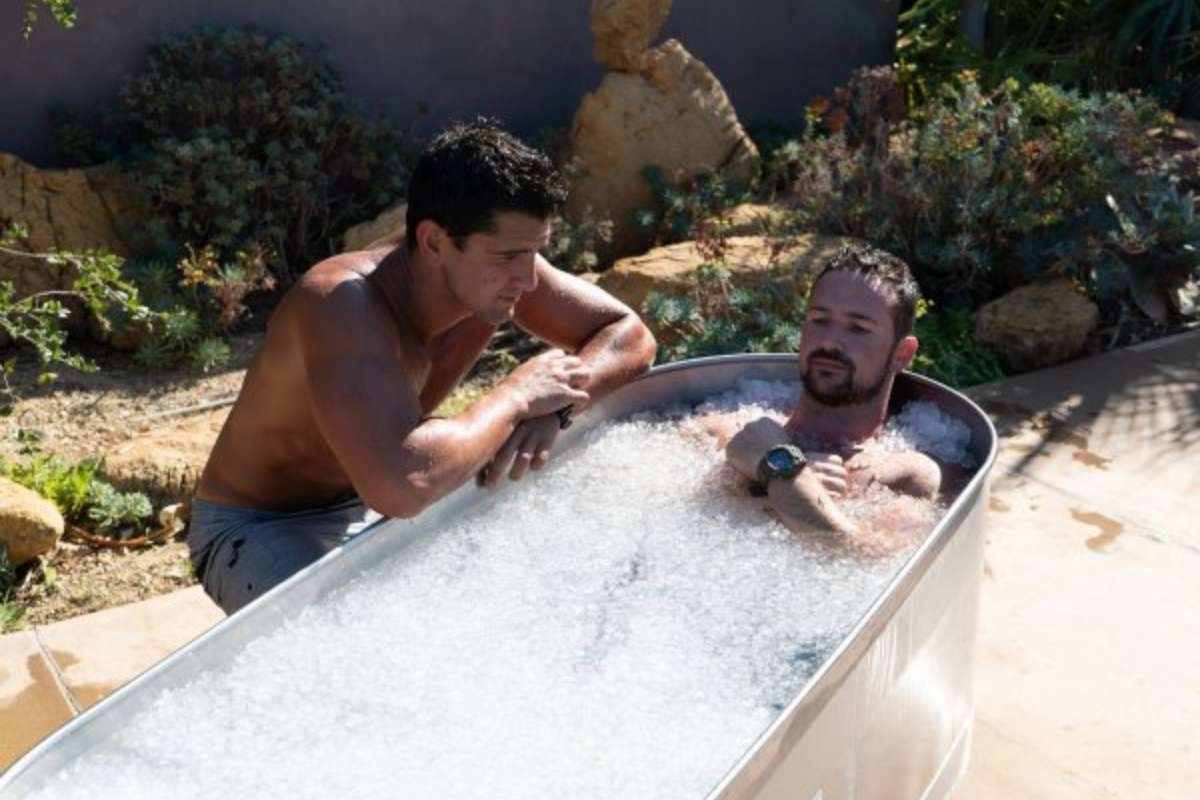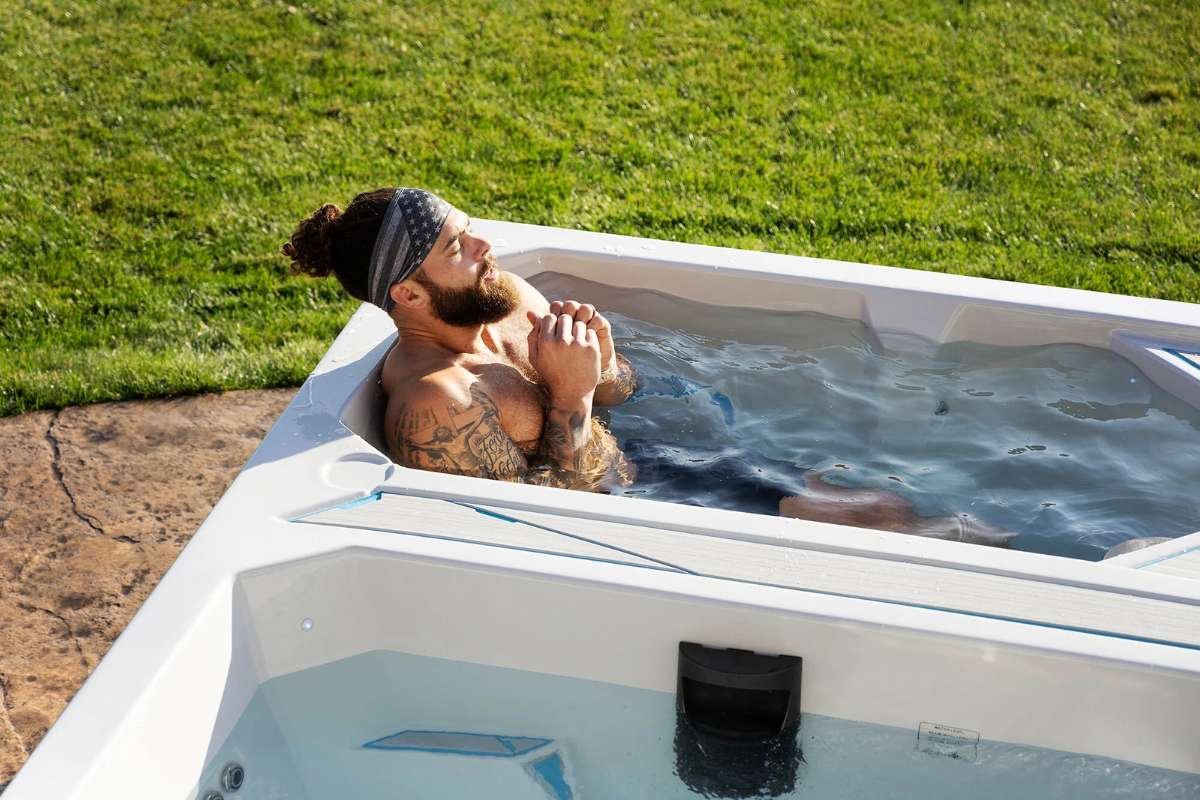Contrast therapy at home is an effective, natural method to help relieve muscle soreness, reduce inflammation, and improve recovery after intense physical activity. By alternating between hot and cold water treatments, individuals can stimulate circulation, promote healing, and reduce pain in an efficient and cost-effective manner. Whether you’re an athlete, a fitness enthusiast, or simply someone looking for relief from everyday aches and pains, contrast therapy at home can be a beneficial addition to your wellness routine.
In this article, we’ll explore what contrast therapy is, how it works, its benefits, and how you can incorporate this technique into your self-care regimen at home.
What is Contrast Therapy?
Contrast therapy at home involves alternating between hot and cold treatments to promote healing and improve circulation. The basic premise is simple: the cold treatment constricts blood vessels, which helps reduce inflammation and pain, while the heat treatment dilates blood vessels, improving blood flow and encouraging the delivery of nutrients and oxygen to injured areas. By alternating between these two extremes, the body experiences a stimulating effect that enhances recovery.
The two main components of contrast therapy are:
- Cold Therapy (Cryotherapy): This typically involves immersing the body or a specific body part in cold water or applying ice packs to target areas. Cold therapy reduces blood flow to the area, which helps decrease inflammation and numb pain.
- Heat Therapy (Thermotherapy): In contrast, heat therapy involves using warm or hot water, heating pads, or hot packs to increase blood flow, relax muscles, and promote healing by delivering oxygen and nutrients to the area.
By alternating between these therapies, contrast therapy at home can provide a range of benefits for those dealing with muscle tension, inflammation, or recovery from physical exertion.
How Does Contrast Therapy Work?

The principle behind contrast therapy at home is based on the body’s natural response to temperature extremes. When exposed to cold, blood vessels constrict (vasoconstriction), which reduces blood flow to the affected area. This can help numb pain and reduce swelling. After applying heat, blood vessels expand (vasodilation), increasing circulation and encouraging the movement of oxygen and nutrients to the affected tissues. This alternating process creates a pumping effect that encourages faster healing.
When you practice contrast therapy at home, your body essentially experiences a “flush and fill” effect: cold reduces inflammation, while heat promotes healing by increasing circulation. The combination of the two helps improve the overall healing process and aids in faster recovery from injuries or strenuous physical activity.
Benefits of Contrast Therapy at Home
Contrast therapy at home offers several benefits that can improve your physical and mental well-being. Some of the key advantages include:
- Improved Circulation: The alternating hot and cold treatments stimulate blood flow, which can help improve circulation throughout the body. This is particularly beneficial for individuals with poor circulation or those recovering from injury.
- Muscle Recovery: If you’re an athlete or someone who engages in intense physical activity, contrast therapy at home can help reduce muscle soreness and stiffness by promoting faster recovery. The heat relaxes muscles, while the cold helps prevent swelling and reduces pain.
- Pain Relief: Whether you’re dealing with chronic pain, tension, or post-workout soreness, contrast therapy at home can provide significant relief. The cold treatment numbs the area and reduces inflammation, while the heat promotes relaxation and relieves muscle tension.
- Reduced Inflammation: Inflammation is often the root cause of pain and discomfort, especially after physical activity. By alternating between hot and cold, contrast therapy can help reduce inflammation and provide relief from conditions like tendonitis, arthritis, and other inflammatory disorders.
- Enhanced Lymphatic Drainage: The alternating hot and cold temperatures can stimulate the lymphatic system, which helps remove toxins and waste products from the body. This process promotes better overall health and can contribute to improved immune function.
- Mental Relaxation: The soothing effects of heat therapy combined with the invigorating sensation of cold therapy can also have mental health benefits. The process helps reduce stress, ease tension, and promote a sense of relaxation and well-being.
How to Perform Contrast Therapy at Home?

Performing contrast therapy at home is simple and requires little more than a bath or shower and access to hot and cold water. Here’s how to do it:
- Prepare Hot and Cold Water: You can use a bath, shower, or even two large containers for your contrast therapy. Fill one container or bath with hot water (around 104°F-106°F or 40°C-41°C), and the other with cold water (around 50°F-60°F or 10°C-15°C). The water should be at a temperature that feels comfortable but not overwhelming.
- Start with Cold: Begin by immersing the affected area in the cold water for about 1-3 minutes. This will cause your blood vessels to constrict and reduce swelling.
- Switch to Hot: After the cold treatment, quickly switch to the hot water for about 3-5 minutes. The heat will dilate your blood vessels, promoting circulation and helping to relax muscles.
- Alternate Between Hot and Cold: Repeat the process of alternating between hot and cold for about 15-20 minutes. Aim for at least three cycles of cold and hot treatments. You can adjust the duration depending on your comfort level and the severity of the injury or soreness.
- Finish with Cold: It’s typically recommended to finish your contrast therapy session with cold water to help reduce any lingering inflammation and numb any discomfort.
- Hydrate: After completing your contrast therapy at home, drink plenty of water to help flush toxins from your body and stay hydrated.
Tips for Contrast Therapy at Home
To maximize the benefits of contrast therapy at home, here are a few tips to keep in mind:
- Listen to Your Body: The temperatures should be warm enough to feel relaxing, but not too hot to cause burns. Similarly, the cold water should be refreshing but not painful. Always stop if you feel uncomfortable.
- Time Limit: If you’re new to contrast therapy at home, start with shorter cycles (1-2 minutes for cold and 3 minutes for heat) and gradually work your way up to longer sessions.
- Target Specific Areas: If you’re using contrast therapy to treat a particular injury or area of pain, focus on that area during the hot and cold treatments for better results.
- Avoid Contrast Therapy if You Have Certain Health Conditions: If you have conditions like cardiovascular disease, open wounds, or are pregnant, consult a healthcare provider before practicing contrast therapy at home.
When to Use Contrast Therapy at Home?

Contrast therapy at home is particularly effective for:
- Post-Workout Recovery: It helps reduce muscle soreness and stiffness after intense physical activity or exercise.
- Injury Recovery: It can speed up recovery from strains, sprains, or other minor injuries by reducing inflammation and promoting healing.
- Chronic Pain Management: People with chronic pain conditions, such as arthritis or fibromyalgia, may find relief through regular contrast therapy sessions at home.
- General Wellness: If you experience frequent tension or stress, contrast therapy can help promote relaxation and improve circulation.
Conclusion
Contrast therapy at home is a simple yet effective method to improve circulation, reduce inflammation, and speed up muscle recovery. By alternating between hot and cold treatments, you can promote healing, reduce pain, and relax your muscles in the comfort of your own home. Whether you’re recovering from an injury, relieving post-workout soreness, or simply looking for a natural way to reduce pain and tension, contrast therapy at home is a valuable tool in your wellness toolkit.
Don’t Miss Out! Your Next Read is Just a Click Away: What Is Cupping Therapy, and Does It Work?







